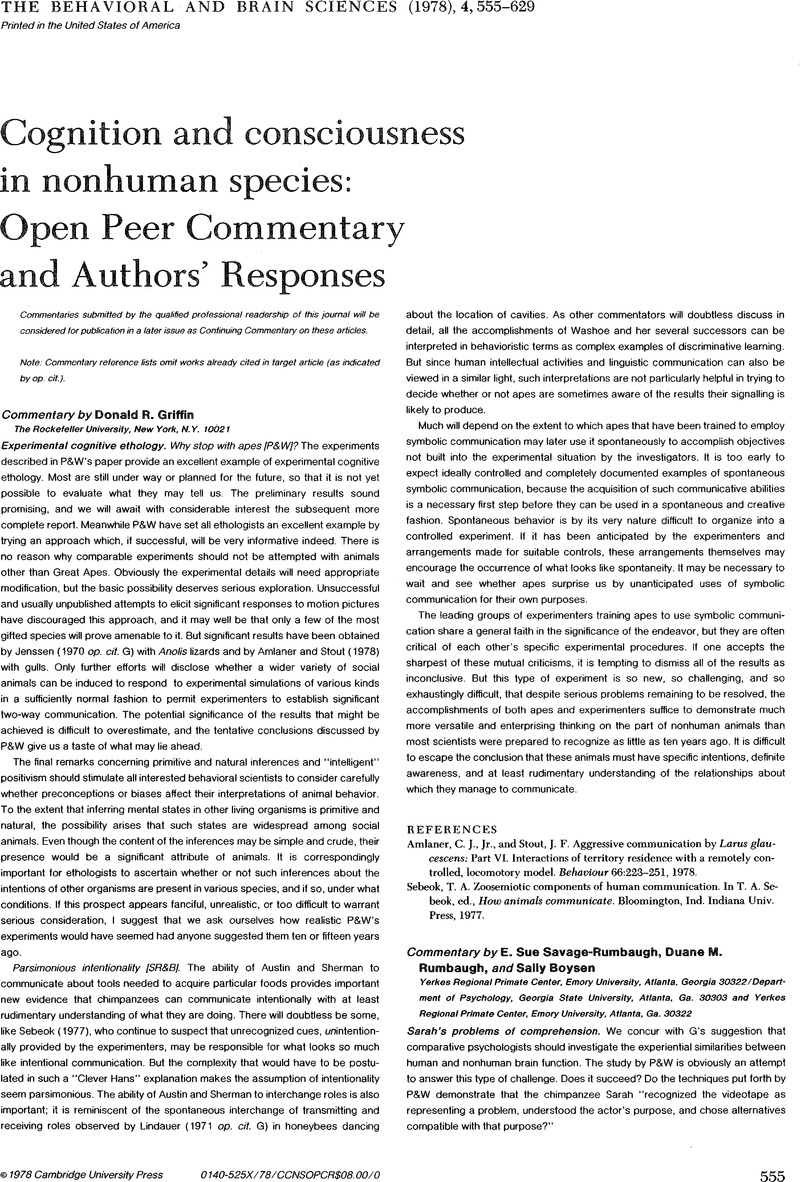Crossref Citations
This article has been cited by the following publications. This list is generated based on data provided by Crossref.
Umiker-Sebeok, Jean
and
Sebeok, Thomas A.
1980.
Speaking of Apes.
p.
1.
Gouzoules, Harold
Gouzoules, Sarah
and
Marler, Peter
1985.
The Development of Expressive Behavior.
p.
77.
Surbey, Michele K
and
McNally, Jeffrey J
1997.
Self-deception as a mediator of cooperation and defection in varying social contexts described in the iterated prisoner's dilemma.
Evolution and Human Behavior,
Vol. 18,
Issue. 6,
p.
417.
Surbey, Michele K.
2011.
Adaptive significance of low levels of self-deception and cooperation in depression.
Evolution and Human Behavior,
Vol. 32,
Issue. 1,
p.
29.



